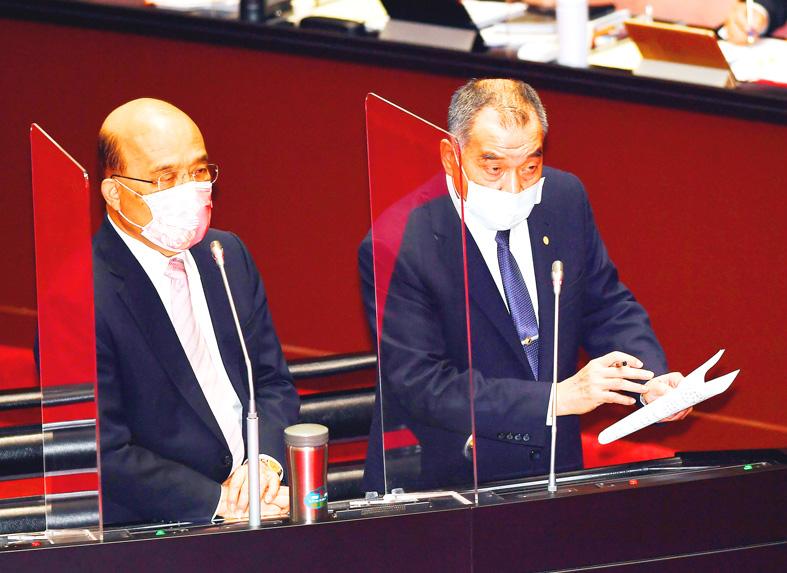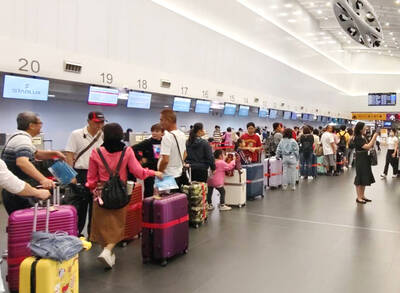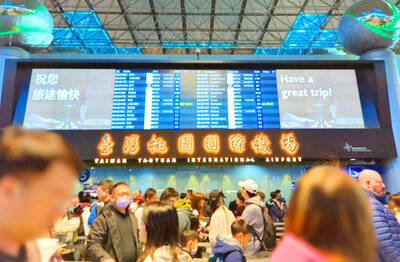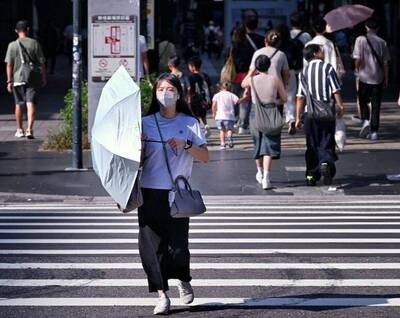A report that a group of Taiwanese marines have been sent on a one-month training program in Guam as part of a Taiwan-US defense cooperation and exchange program is correct, Minister of National Defense Chiu Kuo-cheng (邱國正) said yesterday.
The program is one of a number of “long-standing” bilateral exchange projects between Taipei and Washington, Chiu said, without elaborating.
Chiu made the comments on the sidelines of a hearing at the legisature in Taipei when asked by reporters to comment on a report about the program in the Chinese-language Apple Daily.

Photo: CNA
The Marine Corps has sent a platoon of 40 marines for month-long amphibious landing training at the US military base in Guam to enhance their combat capabilities, the report said.
Taiwanese and US marines would also undergo training for joint operations to learn the latest US Marine Corps tactics, it added.
Chiu’s comments came after President Tsai Ing-wen (蔡英文) on Thursday last week confirmed for the first time the presence of US troops in Taiwan helping to train the military to counter threats posed by China.
Taiwan has “a wide range of cooperation with the US aiming at increasing our defense capability,” Tsai told CNN.
She did not specify how many US service personnel were in Taiwan, saying only that the number was “not as many as people thought.”
International media last year reported that the US had been rotating a small number of US Marines and Special Operations Forces to train the Taiwanese military amid rising tensions across the Taiwan Strait.
At that time Chiu denied that US troops had been deployed to Taiwan, describing US military personnel as being in Taiwan for military training “exchanges” with their Taiwanese counterparts.
China said that it had long been aware that US military personnel regularly visited Taiwan, but accused Tsai of provocation by making such visits public.
Chiu yesterday reiterated his stance that US military trainers and consultants were in Taiwan only on short-term assignments and have not been posted or deployed.

Three Taiwanese airlines have prohibited passengers from packing Bluetooth earbuds and their charger cases in checked luggage. EVA Air and Uni Air said that Bluetooth earbuds and charger cases are categorized as portable electronic devices, which should be switched off if they are placed in checked luggage based on international aviation safety regulations. They must not be in standby or sleep mode. However, as charging would continue when earbuds are placed in the charger cases, which would contravene international aviation regulations, their cases must be carried as hand luggage, they said. Tigerair Taiwan said that earbud charger cases are equipped

Foreign travelers entering Taiwan on a short layover via Taiwan Taoyuan International Airport are receiving NT$600 gift vouchers from yesterday, the Tourism Administration said, adding that it hopes the incentive would boost tourism consumption at the airport. The program, which allows travelers holding non-Taiwan passports who enter the country during a layover of up to 24 hours to claim a voucher, aims to promote attractions at the airport, the agency said in a statement on Friday. To participate, travelers must sign up on the campaign Web site, the agency said. They can then present their passport and boarding pass for their connecting international

Temperatures in northern Taiwan are forecast to reach as high as 30°C today, as an ongoing northeasterly seasonal wind system weakens, the Central Weather Administration (CWA) said. CWA forecaster Tseng Chao-cheng (曾昭誠) said yesterday that with the seasonal wind system weakening, warmer easterly winds would boost the temperature today. Daytime temperatures in northern Taiwan and Yilan County are expected to range from 28°C to 30°C today, up about 3°C from yesterday, Tseng said. According to the CWA, temperature highs in central and southern Taiwan could stay stable. However, the weather is expected to turn cooler starting tonight as the northeasterly wind system strengthens again

Taiwan sweltered through its hottest October on record, the Central Weather Administration (CWA) said yesterday, the latest in a string of global temperature records. The main island endured its highest average temperature since 1950, CWA forecaster Liu Pei-teng said. Temperatures the world over have soared in recent years as human-induced climate change contributes to ever more erratic weather patterns. Taiwan’s average temperature was 27.381°C as of Thursday, Liu said. Liu said the average could slip 0.1°C by the end of yesterday, but it would still be higher than the previous record of 27.009°C in 2016. "The temperature only started lowering around Oct. 18 or 19